Hydraulic Upender Safety: Identifying and Preventing Common Workplace Injuries
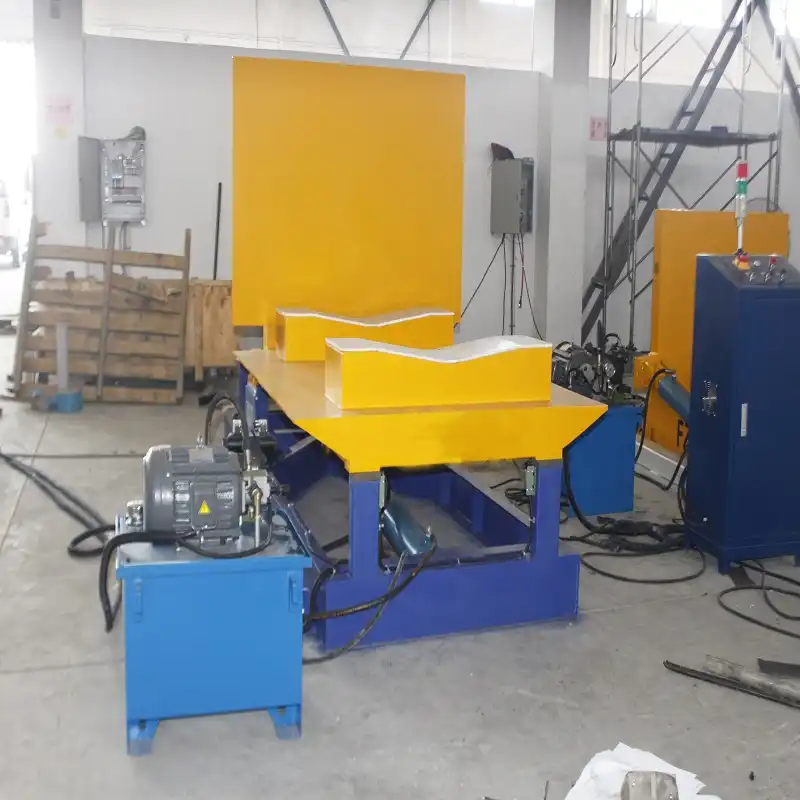
Introduction: Enhancing Safety in Hydraulic Upender Operations
Hydraulic upenders, also known as hydraulic tilters or coil positioners, are indispensable machines in heavy industries like metal fabrication, automotive manufacturing, and logistics. They streamline the handling, rotation, and positioning of large, heavy, or awkwardly shaped materials, improving efficiency and reducing manual strain. However, the power and forces involved mean their operation carries inherent risks. Without proper procedures and safety awareness, these machines can be involved in serious workplace incidents.
This guide provides an in-depth look at the common injuries associated with hydraulic upender use and outlines effective prevention strategies. By understanding these hazards and implementing robust safety protocols, companies can significantly reduce risks, protect their workforce, improve operational uptime, and comply with safety regulations like those from OSHA (Occupational Safety and Health Administration).
1. Understanding Hydraulic Upender Functionality and Risks
Hydraulic upenders utilize hydraulic systems – fluid under pressure – to generate the force needed to lift, tilt, or rotate substantial loads smoothly and precisely. Key aspects include:
- Mechanism: Hydraulic fluid transmits force through cylinders and motors, enabling controlled movement of the upender's platform or arms.
- Capacity: These machines vary widely in load capacity, from smaller units handling a few tons to massive installations capable of maneuvering loads weighing 50 tons or more. Selecting the correct capacity for the task is crucial for safety.
- Control: Operators typically manage the upender via a control panel with buttons, joysticks, or levers, requiring skill and attention for precise positioning.
While designed to make material handling safer and easier, potential dangers arise from improper operation, inadequate training, poor maintenance, or equipment failure. Recognizing these potential failure points is the first step toward prevention.

2. Common Workplace Injuries Associated with Hydraulic Upenders
Operating and working near hydraulic upenders can expose personnel to several types of hazards. The most frequent injuries include:
- Crushing Injuries: Often severe, resulting from being caught between the load, the machine, and fixed structures.
- Musculoskeletal Disorders (MSDs): Including back strains, shoulder injuries, and repetitive strain injuries from awkward postures or manual adjustments.
- Slips, Trips, and Falls: Commonly caused by hydraulic fluid leaks creating slippery surfaces.
- Hand and Finger Injuries: Pinching, crushing, or amputation risks when hands are near moving parts or the load.
- Eye Injuries: Potential damage from high-pressure hydraulic fluid spray or flying debris.
- Electrical Shocks: Risk associated with the electrical systems powering the hydraulic pump and controls, especially if fluid leaks occur.
- Hearing Damage: Prolonged exposure to noise generated by the hydraulic system and the movement of heavy loads.
- Burns: From contact with hot hydraulic fluid or components, or in rare cases, from fires caused by fluid ignition.
- Impact Injuries: Being struck by shifting or falling loads due to instability or improper securing.
Identifying these specific risks allows for the development of targeted safety interventions.
3. Preventing Crushing Injuries: Maintaining Safe Zones
Crushing incidents represent one of the most severe hazards in hydraulic upender operation, potentially leading to life-altering injuries or fatalities. These typically happen when a worker gets trapped between the moving parts of the upender, the load itself, or surrounding structures.
Common Causes:
- Unexpected machine movement due to control error or hydraulic failure.
- Operator or bystander entering the operational hazard zone during movement.
- Failure of load securing mechanisms, causing the load to shift or fall.
- Lack of clear communication between operators and ground personnel.
- Insufficiently marked or guarded operational areas.
Prevention Strategies:
- Establish Clear Hazard Zones: Demarcate the area around the upender where movement occurs. Use physical barriers or floor markings and enforce strict rules about entry during operation.
- Implement Lockout/Tagout (LOTO) Procedures: Ensure LOTO is used during maintenance, repair, or cleaning to prevent accidental activation. See OSHA LOTO standards for guidance.
- Regular Equipment Inspections: Focus on hydraulic integrity (hoses, seals, valves), structural components, and safety interlocks. Address any issues immediately.
- Comprehensive Operator Training: Emphasize situational awareness, communication protocols, and emergency stop procedures.
- Load Stability Checks: Ensure loads are properly centered, secured (if necessary), and within the upender's rated capacity before operation.
4. Mitigating Back and Muscle Strains Through Ergonomics
While hydraulic upenders reduce heavy lifting, associated tasks like positioning loads, operating controls, or performing maintenance can still lead to MSDs if ergonomics are poor.
Common Causes:
- Awkward postures while operating controls or observing the load.
- Manual pushing or pulling to adjust heavy items on the upender platform.
- Repetitive movements without sufficient breaks.
- Poor workstation design (e.g., control placement).
Prevention Strategies:
- Ergonomic Training: Educate workers on neutral postures, proper body mechanics, and the risks of overexertion.
- Utilize Positioning Aids: Employ tools like rollers, push sticks, or overhead cranes for minor load adjustments instead of manual force.
- Optimize Control Stations: Ensure controls are easily accessible without reaching or awkward bending. Consider remote control options where feasible.
- Job Rotation and Breaks: Rotate tasks among workers and ensure adequate rest breaks to reduce repetitive strain and fatigue.
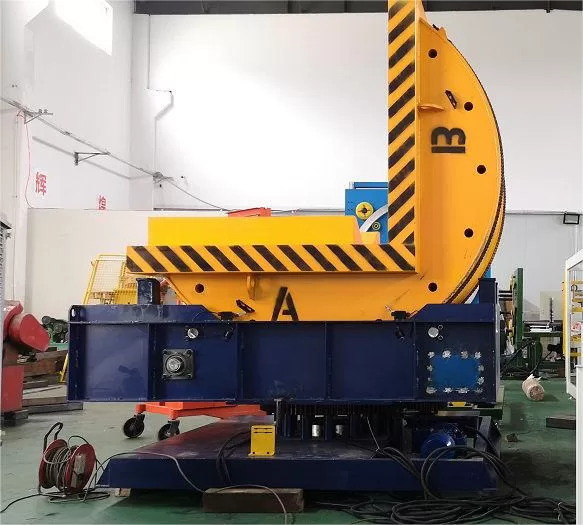
automatic coil upender 5. Preventing Slips, Trips, and Falls from Hydraulic Fluid Leaks
Hydraulic fluid leaks are a persistent issue that can create dangerous slip hazards on workshop floors.
Common Causes:
- Worn or damaged hydraulic hoses, seals, or fittings.
- Overfilling hydraulic reservoirs.
- Inadequate inspection and maintenance routines.
- Poor housekeeping and spill response.
Prevention Strategies:
- Proactive Maintenance: Implement a rigorous inspection schedule for the hydraulic system, focusing on potential leak points. Replace components preventatively based on manufacturer recommendations or observed wear.
- Effective Housekeeping: Maintain clean work areas around the upender. Use drip pans where necessary. Establish clear procedures for immediate cleanup of any spills using appropriate absorbent materials.
- Appropriate Flooring and Footwear: Utilize non-slip flooring surfaces in operational areas. Mandate the use of slip-resistant safety footwear for all personnel working near the equipment.
6. Safeguarding Hands and Fingers During Operation
The interface between the operator, the machine, and the load presents numerous risks for hand and finger injuries.
Common Causes:
- Placing hands near pinch points during machine movement.
- Attempting to adjust the load manually while the machine is active or potentially active.
- Equipment malfunction causing unexpected movement.
- Lack of appropriate machine guarding.
Prevention Strategies:
- Machine Guarding: Ensure all moving parts and pinch points are adequately guarded according to relevant safety standards (e.g., ISO 13857 on safety distances).
- Hands-Off Operation: Train operators to never place their hands on the load or near moving parts during operation. Use tools for adjustments.
- Personal Protective Equipment (PPE): Require appropriate work gloves offering cut and pinch resistance, but ensure they do not pose an entanglement risk.
- Emergency Stops: Ensure E-stops are clearly marked, easily accessible, and regularly tested.
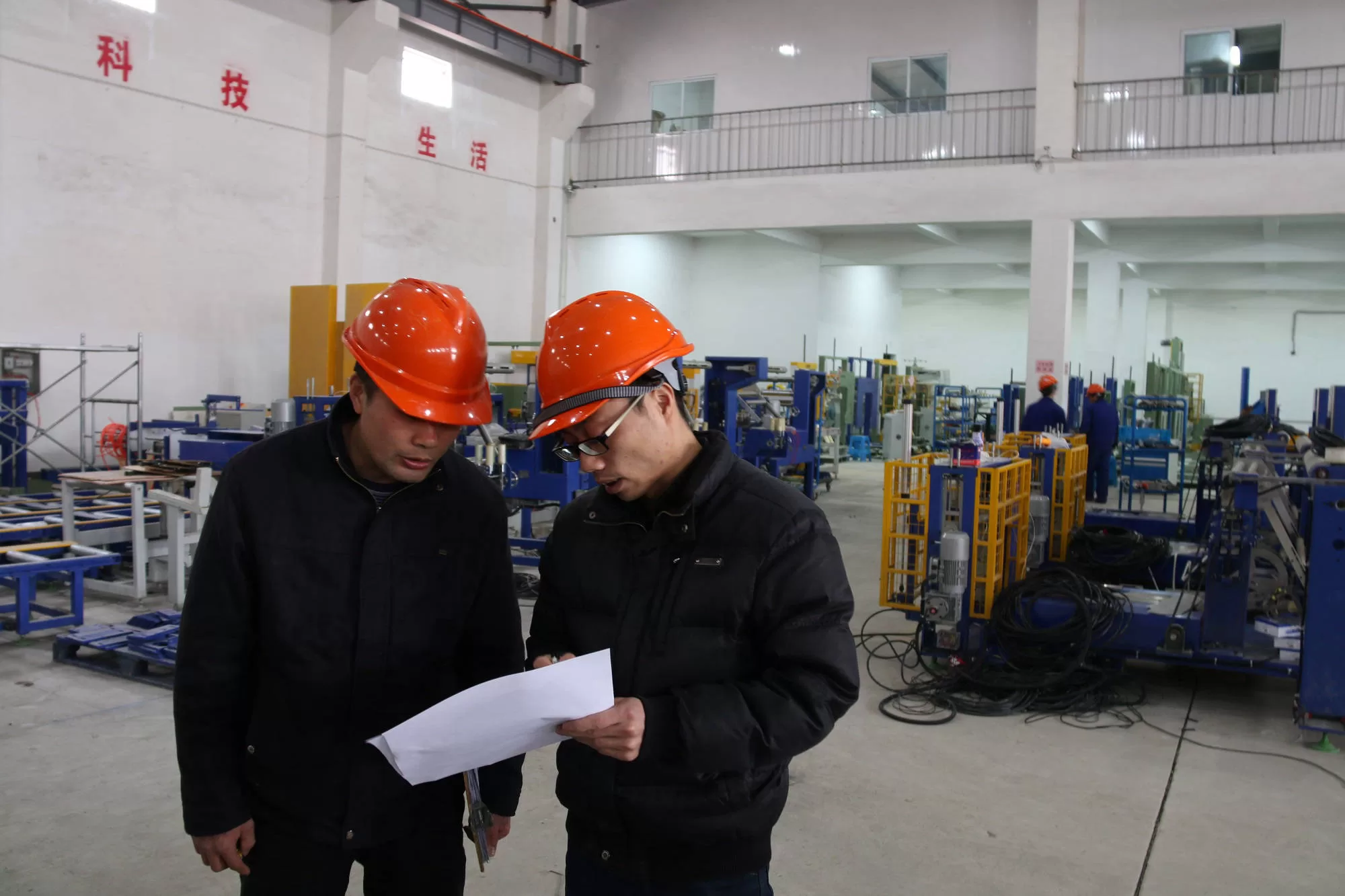
Get Your Best Solution !
7. Protecting Eyes from Fluid Spray and Debris
High-pressure hydraulic systems can fail catastrophically, releasing fluid jets that can cause severe eye damage or skin penetration injuries. Debris generated during operation also poses a risk.
Common Causes:
- Rupture of aging or damaged hydraulic hoses.
- Loose fittings spraying fluid under pressure.
- Flying particles from the load or surrounding processes.
- Lack of mandatory eye protection.
Prevention Strategies:
- Mandatory Eye Protection: Require safety glasses or goggles with side shields for anyone operating or working near the hydraulic upender. Consider face shields for tasks with higher spray risk (e.g., maintenance).
- Regular Hose and Fitting Inspections: Visually inspect hydraulic lines for abrasion, cracking, or bulging. Check fittings for tightness. Follow replacement schedules.
- Pressure Release Procedures: Always ensure hydraulic pressure is safely released before performing maintenance on the system.
- Protective Shielding: Install physical barriers or shields where practical to contain potential spray from high-risk components.
8. Addressing Electrical Hazards and Shock Risks
Hydraulic upenders rely on electrical power for their motors and control systems, introducing potential electrical hazards, particularly if hydraulic fluid leaks interact with electrical components.
Common Causes:
- Damaged wiring insulation or exposed conductors.
- Fluid ingress into electrical enclosures or control panels.
- Improper grounding of the equipment.
- Performing electrical maintenance without proper qualifications or LOTO procedures.
Prevention Strategies:
- Qualified Electrical Inspections: Ensure regular inspection and testing of electrical systems by certified electricians.
- Protect Electrical Components: Use appropriately rated enclosures (e.g., NEMA or IP rated) to protect electrical parts from fluid ingress and physical damage.
- Proper Grounding: Verify that the equipment is correctly grounded according to electrical codes.
- Control Fluid Leaks: Diligent hydraulic maintenance also helps prevent electrical hazards by keeping fluids away from electrical systems.
- Safe Work Practices: Adhere strictly to electrical safety procedures, including LOTO, when working on or near electrical components.
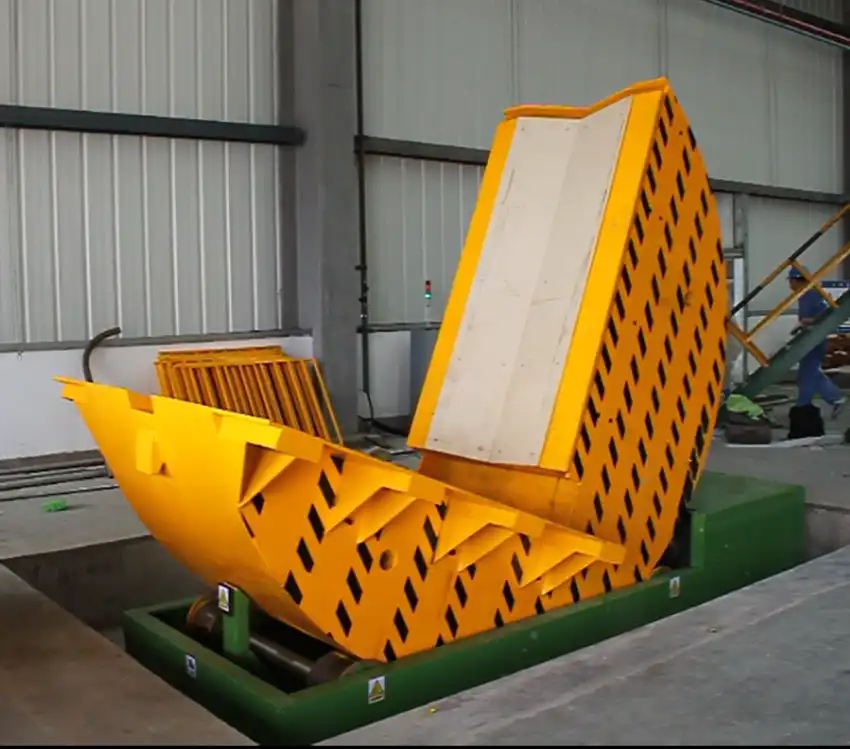
upender and tilter with sliding table2 9. Reducing Hearing Damage from Operational Noise
The operation of large hydraulic systems and the movement of heavy materials can generate significant noise levels, potentially leading to noise-induced hearing loss (NIHL) over time.
Common Causes:
- Noise from the hydraulic power unit (pump, motor).
- Impact sounds from load handling or movement.
- General ambient noise levels in industrial environments.
Prevention Strategies:
- Hearing Protection: Provide and enforce the use of suitable hearing protection (earplugs, earmuffs) in areas where noise levels exceed safe limits (typically 85 dBA TWA).
- Noise Monitoring: Conduct regular noise level assessments to identify high-risk areas and job roles.
- Engineering Controls: Where feasible, implement noise reduction measures such as acoustic enclosures for power units or vibration dampening materials.
- Maintenance: Ensure equipment is well-maintained, as worn components can often generate more noise.
10. Controlling Fire Hazards Related to Hydraulic Fluid
Many standard hydraulic fluids are mineral oil-based and therefore flammable. Leaks near ignition sources can lead to fires.
Common Causes:
- Hydraulic fluid leaks spraying onto hot surfaces (e.g., motors, exhaust manifolds).
- Sparks from welding, grinding, or electrical faults igniting pooled or sprayed fluid.
- Accumulation of oil-soaked rags or materials near heat sources.
Prevention Strategies:
- Use Fire-Resistant Fluids: Consider using fire-resistant hydraulic fluids where feasible, especially in high-temperature environments or near ignition sources.
- Control Ignition Sources: Implement strict controls on activities like welding or grinding near hydraulic equipment. Ensure electrical systems are well-maintained to prevent sparks.
- Prevent and Contain Leaks: Rigorous maintenance is key. Use drip trays and maintain good housekeeping to prevent fluid accumulation.
- Fire Safety Measures: Ensure appropriate fire extinguishers (typically Class B for oil fires) are readily available and personnel are trained in their use.
11. Addressing Operator Fatigue: Mental and Physical Strain
Operating heavy machinery requires concentration and physical alertness. Long hours, repetitive tasks, and high-pressure environments can lead to fatigue, increasing the risk of errors and accidents.
Common Causes:
- Extended work shifts without adequate breaks.
- Monotonous, repetitive operation cycles.
- High-stress production demands.
- Poor ergonomic setup leading to physical discomfort.
Prevention Strategies:
- Work/Rest Scheduling: Implement policies ensuring adequate rest breaks during shifts and sufficient time off between shifts.
- Task Variation: Where possible, rotate operators between different tasks or types of equipment to reduce monotony and repetitive physical strain.
- Ergonomic Assessments: Regularly assess workstations and operator tasks to identify and mitigate physical stressors.
- Promote Wellness: Encourage healthy lifestyle habits (sleep, nutrition) that help combat fatigue. Foster a culture where workers feel comfortable reporting fatigue without fear of reprisal.
12. The Critical Role of Training, Maintenance, and Safety Culture
Preventing injuries fundamentally relies on a combination of well-maintained equipment, properly trained personnel, and a strong organizational commitment to safety.
Key Pillars of Prevention:
- Comprehensive Training:
- Initial and Refresher: Provide detailed training on specific upender operation, load securing, hazard recognition, emergency procedures, and basic maintenance checks. Regularly refresh this training.
- Task-Specific: Ensure training covers the specific types of loads and procedures relevant to your workplace.
- Preventative Maintenance Program:
- Scheduled Inspections: Follow manufacturer recommendations and establish a regular schedule for inspecting hydraulics, structure, controls, and safety features.
- Record Keeping: Maintain detailed logs of inspections, maintenance, and repairs.
- Prompt Repairs: Address identified issues immediately before they escalate into safety hazards.
- Developing a Strong Safety Culture:
- Management Commitment: Leadership must visibly prioritize safety.
- Worker Involvement: Encourage workers to report hazards and suggest safety improvements.
- Clear Procedures: Develop and enforce clear Standard Operating Procedures (SOPs) for all tasks involving the hydraulic upender.
- Incident Investigation: Thoroughly investigate all near misses and incidents to identify root causes and implement corrective actions.
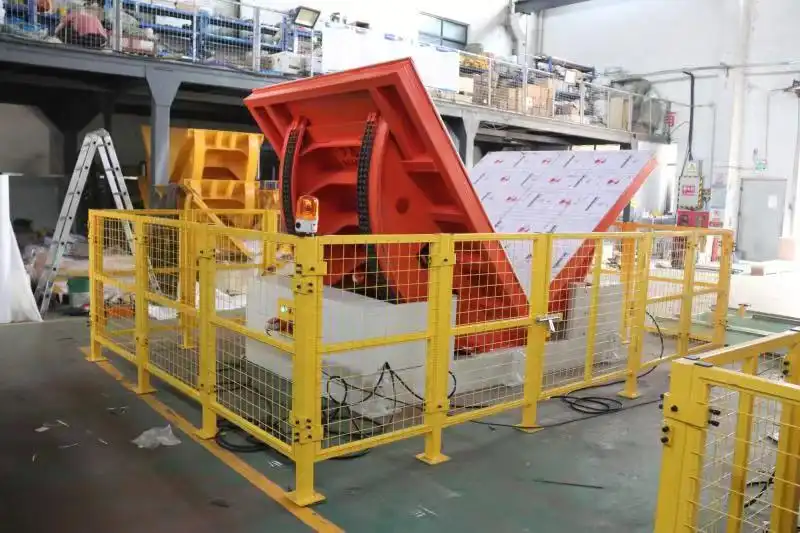
die mould upender and tilter2 Conclusion: Prioritizing Safety in Hydraulic Upender Use
Hydraulic upenders are powerful tools that significantly enhance productivity in many industries. However, their safe operation demands constant vigilance, robust procedures, and well-trained personnel. By understanding the common hazards – from crushing and MSDs to slips, electrical risks, and fire potential – and diligently applying the prevention strategies outlined above, businesses can create a significantly safer working environment.
Investing in regular maintenance, comprehensive training, ergonomic improvements, and fostering a proactive safety culture not only protects workers from injury but also improves operational efficiency, reduces downtime, and ensures compliance with essential safety regulations. Safety isn't just a requirement; it's a cornerstone of sustainable and responsible industrial operations.

Get Your Best Solution !